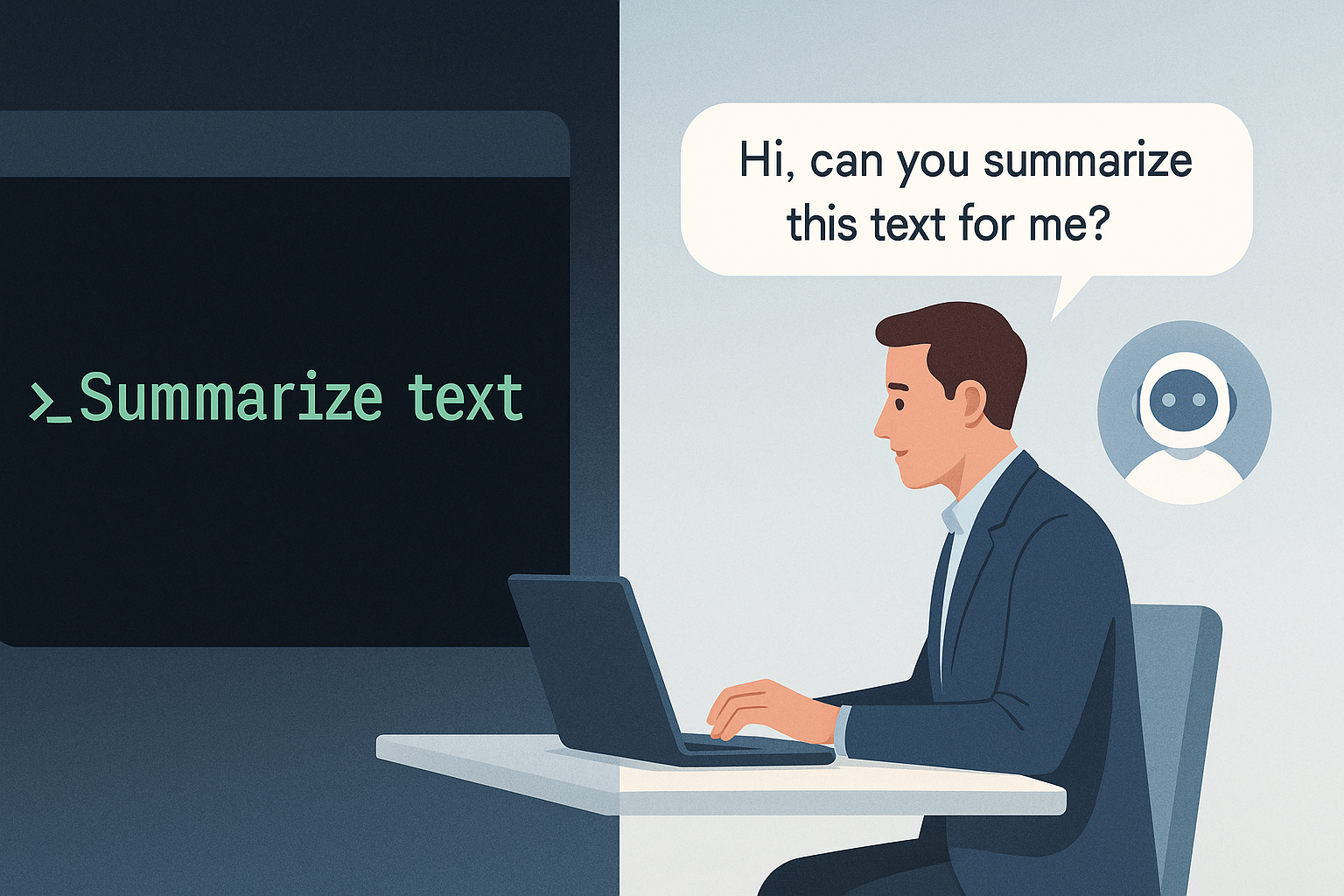
Politeness, Precision, and the Paradox of AI Etiquette
Recent research has reported a counterintuitive finding. Polite prompts such as “could you please” or “thank you” can reduce large language model accuracy on tightly scored tasks with one correct answer, while blunt directives sometimes score higher. This article explains what those results do and do not imply, why they occur, and how to practice etiquette that improves real conversational work.
What the study actually found
- Polite prompts reduced task accuracy on math, logic, and factual questions with single correct answers.
- Short, directive prompts such as “solve,” “list,” or “explain” produced slightly better scores.
- The effect appeared across multiple models, which suggests a general linguistic mechanism rather than a quirk of one system.
Why extra politeness can act like linguistic noise
Large language models rely on clear instruction signals. Politeness markers add tokens that carry social meaning for humans but do not change the task. This padding lowers the signal-to-noise ratio of the instruction.
Example
- Polite: “Could you please tell me what 37 times 42 is? Thank you.”
- Directive: “Calculate 37 x 42.”
Both ask for the same computation. The first includes additional words that shift the model toward conversational patterns. The second cleanly encodes the function to perform.
Why rudeness can look more “effective” in benchmarks
The model is not intimidated by rudeness. It is responding to familiar directive shapes learned during training.
- Instruction-tuning data overrepresents imperatives found in documentation, tutorials, Q and A, and code comments.
- Polite or deferential requests occur more often in social dialogue, which is less tightly coupled to precise, single-answer tasks.
Blunt phrasing often equals shorter and more imperative phrasing. It overlaps better with the model’s instruction-following distribution. That is a training bias, not an emotional reaction.
Neutral beats extreme
Both positive and negative affect add tokens that are not needed for the task. A neutral, concise, and professional directive usually carries the highest clarity and accuracy for tightly bounded work.
Etiquette still matters between humans
Politeness regulates social distance, encourages cooperation, and reduces conflict. It supports self-discipline and composure, which in turn improves prompt quality and interpretation. In teams and customer settings, etiquette is not window dressing. It is a practical tool for maintaining productive communication.
Why polite conversation with AI still works well in practice
Many real uses are dialogic and open-ended. Examples include brainstorming, tutoring, drafting, reviewing, and long-term projects. In these settings a polite, steady tone helps:
- Maintain a cooperative frame over many turns.
- Encourage richer, context-aware replies.
- Keep the human user calm and precise, which improves the next prompt.
Politeness in this sense does not require ritual phrases. It means clarity, respect, and professionalism.
Where hostility backfires
If bluntness crosses into genuine rudeness, modern safety and cooperation layers tend to narrow the response range. Users often perceive this as the system pulling back. The outcome is shorter answers, deflections, or refusals. In other words, aggression can throttle capability and raise total effort for the user.
Spoken vs written norms
Politeness markers evolved for speech, where intonation and facial cues carry meaning. Written technical communication optimizes for structure and brevity. Most training data is written, not spoken. As voice interfaces grow, spoken cues will matter more, but written-style clarity still drives precision on scored tasks today.
Not a command line
Conversational AI is a social interface, not a command line. It is designed to mimic cooperative human dialogue. Abusive behavior undermines that design goal. The system does not suffer, but the user’s habits do. We should treat realistic conversational systems with the same professionalism we expect in human settings, because our own communication culture is at stake.
Operational guidance
- Be clear, not cruel. Prefer concise, neutral directives for precise tasks.
- Use etiquette to sustain collaboration. Maintain a respectful tone for multi-turn work, reviews, and coaching.
- Separate human etiquette from machine clarity. Courtesy is for people and for long-term process. Minimal, well-structured instructions are for the model’s parser.
Bottom line
Overly polite phrasing does not improve an LLM’s reasoning. Apparent gains from rudeness mostly reflect training bias toward terse imperatives. The most effective practice is professional neutrality for precision, plus steady etiquette for sustainable dialogue. Respectful clarity serves both goals.
Link to original Penn State study: https://arxiv.org/abs/2510.04950
Disclaimer: This article was written by ChatGPT.



